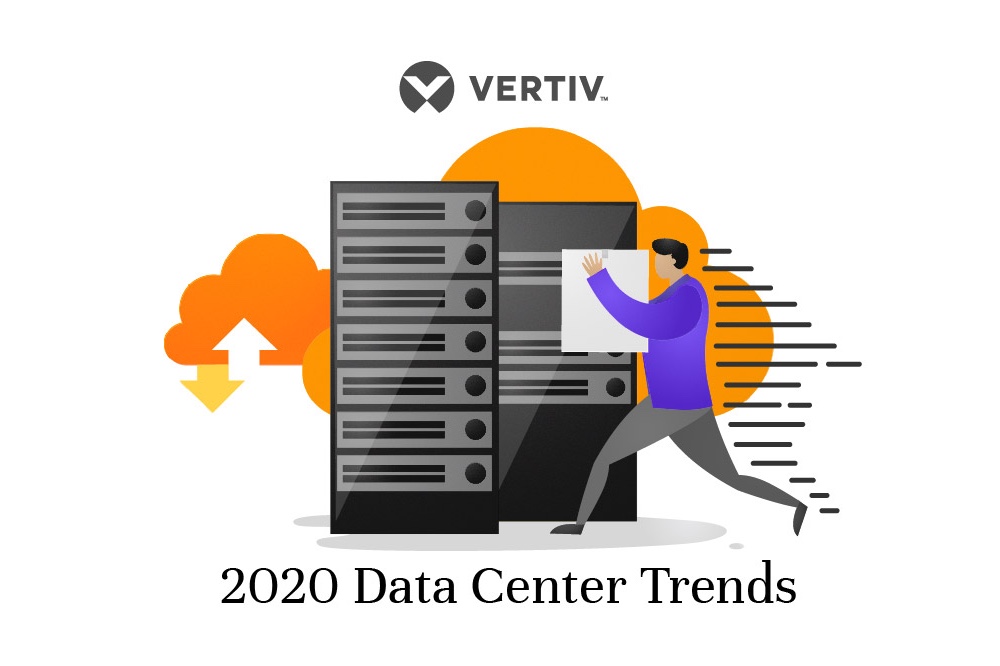We may now be several weeks into 2020, but that doesn’t mean it’s too late to get your predictions in for what will be the key data centre trends in 2020. We’ve already had ABB, Aruba Enterprise, Interxion, Kaspersky and Rackspace give their two cents, and now Vertiv is predicting what it thinks will shape the industry over the next 12 months.
As the world charges into 2020, organisations increasingly will forego the enterprise-or-cloud debate that dominated C-level conversations in recent years in favour of hybrid architectures that incorporate public and private cloud models and edge assets around a reconfigured core. This evolving approach to managing data and computing resources is one of five emerging 2020 data centre trends identified by experts from Vertiv.
The trending hybrid architectures will allow organisations to maintain control of sensitive data while still meeting soaring demands for more capacity and increased computing capabilities closer to the consumer. As connectivity and availability become conjoined concepts in this new data ecosystem, an increasing premium will be placed on seamless communication from core to cloud to edge.
“A new equilibrium is emerging in the data centre space as the industry wrestles with capacity challenges and advanced applications that are forcing significant changes to data centres of all shapes and sizes,” said Vertiv CEO Rob Johnson.
“At the same time, speed of deployment is increasingly becoming a tipping point in technology decisions and will likely shape investment and innovation in the space as we head into 2020. This will manifest itself in many ways, but the message to data centre equipment providers is clear: The status quo is not acceptable.”
Hybrid architectures go mainstream: While cloud computing will continue to be an important part of most organisations’ IT strategy, we are seeing a subtle change in strategy as organisations seek to tailor their IT mix and spending to the needs of their applications. As we see more of these hybrid architectures, it becomes increasingly clear that the enterprise data centre is alive and well, even if its role is changing to reflect a mix that best serves modern organisations.
Speed of deployment as the new arms race: As capabilities across technologies and systems flatten out, data centre and IT managers will increasingly turn to other criteria for selecting equipment. Cost is always a separator, but more and more the decision will depend on how quickly assets can be deployed. When all other factors are close, any advantage in speed of deployment and activation can be the determining factor. This is especially true as computing continues to migrate to the edge in today’s distributed networks, where delivery delays mean lack of service – and revenue.
Average rack density remains static … but: Although average rack density is likely to reflect marginal increases at best, the surge in advanced applications and workloads related to artificial intelligence (AI), such as machine learning and deep learning, will make pockets of high-performance computing necessary and more common. Vertiv experts anticipate early activity in this space in the areas of defense, advanced analytics and manufacturing in 2020, laying the foundation for more widespread adoption in 2021 and beyond. These racks so far represent a miniscule percentage of total racks, but they nevertheless can present unfamiliar power and cooling challenges that must be addressed. The increasing interest in direct liquid cooling is a response to high-performance computing demands.
Batteries pay it forward: In 2016, Vertiv experts predicted lithium-ion batteries would begin to find a home in the data centre, and that has proven to be true as lithium-ion today holds a significant share of the UPS battery market. That share is growing and starting to extend to edge sites, where the smaller footprint and reduced maintenance requirements are a natural fit. The next step is leveraging the flexibility of lithium-ion and other emerging battery alternatives, such as thin plate pure lead (TPPL), to offset their costs. As we move into 2020, more organisations will start to sell the stored energy in these batteries back to the utility to help with grid stabilisation and peak shaving. Expect this to be an important part of larger conversations around sustainability in the data centre industry.

